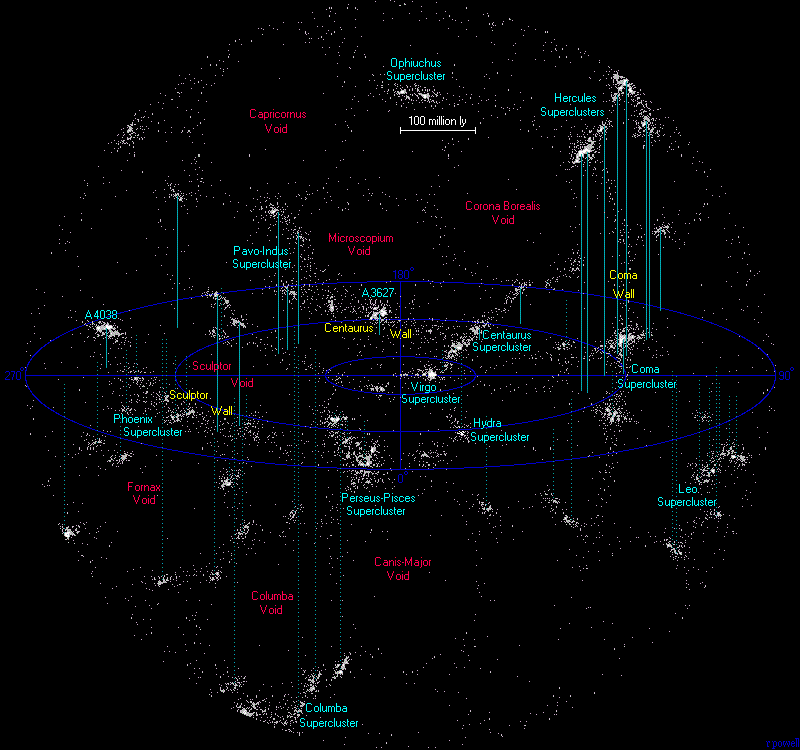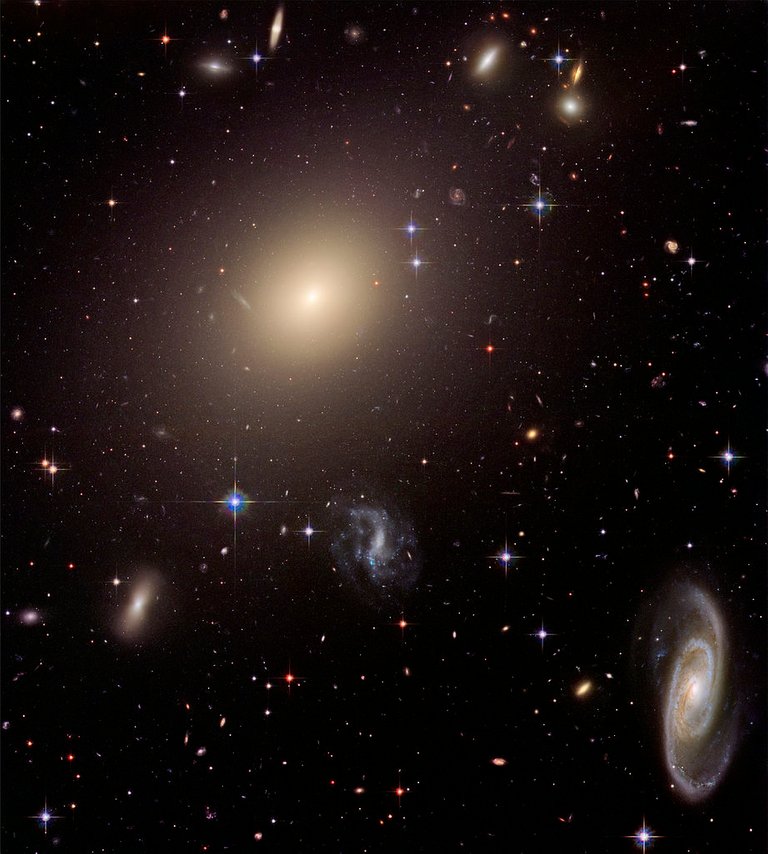Galaxies are huge structures. They are connecting into clusters, and these form even larger superclusters. The universe turns out to be a network of superclusters of galaxies filling a huge empty space to a small extent.
By Andrew Fruchter (STScI) et al., WFPC2, HST, NASA link [Public domain]

Galaxies seem to be surrounded by cosmic emptiness. However, on a universe scale, the free spaces between galaxies aren't as large as they might seem. Most galaxies aren't completely alone, they merge into groups called galaxy clusters and supergroups. Clusters of galaxies are different from each other. Some are quite small and can be found in an area several hundred thousand light years wide. Large galaxy clusters, on the other hand, gather thousands of galaxies and occupy areas that are many millions of light years wide. Despite the large distances between individual galaxies in clusters, they move in one direction and are kept together by the gravity of these galaxies.
By Richard Powell link [CC BY-SA 2.5 license]

In recent years, observations of the sky have shown over 3,000 clusters of galaxies. The larger ones often occupy 10 million light years of space. The nearest large cluster of galaxies is in the constellation of the Virgo. The cluster has about 2,000 galaxies. They extend over an area of about 50 million light years. The other cluster closest to us is located in the constellation of Coma Berenices. It combines around 1,000 larger and over 20,000 small galaxies! And let's think that our Milky Way is just one galaxy that contains millions of stars like our sun. The universe is so huge that it's hard to imagine.
By NASA, ESA, and The Hubble Heritage Team (STScI/AURA); J. Blakeslee (Washington State University) link [Public domain]

Our galaxy belongs to our Local System. Closest to us is the Great Galaxy in Andromeda (M31). Our entire Local System occupies an area about 8 million light years across. There are about 35 galaxies in our group. Most galaxies in this group are elliptical and irregular objects. Larger clusters focus more massive elliptical galaxies in their center, and the further away from the center, the density of galactic matter becomes smaller and smaller. Everything is guilty of gravity, even at these enormous distances. Large clusters usually have structures resembling a huge sphere. The smaller ones often have an irregular shape.
By Richard Powell link [CC BY-SA 2.5 license]

Clusters of galaxies merge into even larger structures, or superclusters. The American astronomer George Abell has identified over 50 superclusters visable from Earth. The largest superclusters cover up to 300 million light years! Our Local System belongs to a supercluster in the constellation of the Virgo. To this day, we do not know how these galaxy clusters originated, perhaps for billions of years, gravity has brought them close enough to create these huge groups.
Greetings to lovers of Astronomy!
References:

This post has been voted on by the SteemSTEM curation team and voting trail in collaboration with @curie.
If you appreciate the work we are doing then consider voting both projects for witness by selecting stem.witness and curie!
For additional information please join us on the SteemSTEM discord and to get to know the rest of the community!